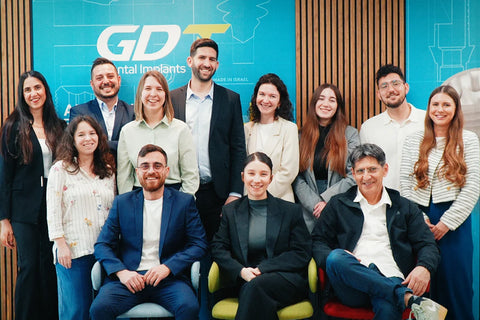In this GDT Dental Implants article, we will delve deep into the GDT BioMembrane, exploring its critical role in dental regenerative procedures. Barrier membranes like the GDT BioMembrane are essential in guided bone regeneration (GBR) and guided tissue regeneration (GTR). These membranes protect the surgical site, facilitate the proper growth of bone and tissue, and ensure successful dental implants.
The Role of Barrier Membranes
Barrier membranes are indispensable in procedures requiring bone and tissue regeneration. They act by selectively excluding unwanted cells from the bone defect area, which is crucial for the controlled and effective regeneration of bone and tissue. This process ensures that only the desired tissue types grow in the targeted regions, supporting the structural integrity of dental restorations¹.
The GDT BioMembrane: A Closer Look
The GDT BioMembrane is crafted from highly purified Type I bovine collagen, making it a biocompatible and resorbable option that aligns perfectly with the needs of modern dental practices. This membrane is engineered to provide exceptional support during GBR and GTR procedures by addressing four key requirements: exclusion of unwanted cells, maintenance of space, protection of the wound, and stabilization of the blood clot.
One of the most notable features of the GDT BioMembrane is its unique fibrillar matrix structure, which significantly enhances its strength. This structure increases the membrane’s suture pull-out resistance, ensuring it remains securely in place during surgical procedures. Additionally, the membrane’s extended degradation period, lasting between 16 to 24 weeks, matches the natural healing timeline required for most bone regeneration procedures, providing sustained support during the entire healing process².
The GDT BioMembrane also excels in its resistance to bacterial infiltration, a critical factor in maintaining sterility at the wound site. This resistance helps prevent infections and supports a sterile environment that is conducive to optimal healing. Furthermore, the membrane promotes the binding of growth factors, platelet aggregation, and the activity of osteoblasts and osteoclasts, which accelerates bone tissue remodeling and enhances the repair of bone defects³.
Clinical Applications
The versatility of the GDT BioMembrane makes it suitable for various clinical applications, including extraction sockets, implant site preparation, and alveolar ridge preservation. Its effectiveness extends to sinus floor augmentation, where it can be used both over the lateral window and under the Schneiderian membrane, ensuring that even the most challenging cases are managed with precision and care⁴.
Conclusion
In this GDT Dental Implants article, we have explored the GDT BioMembrane's role in enhancing dental regenerative procedures. Its superior composition, extended resorption time, and unique features make it an indispensable tool for dental professionals. For those with specific needs, GDT Dental Implants also offers the PTFE Non-Resorbable Membrane Barrier and the PTFE Titanium-Reinforced Membrane Barrier, providing additional solutions tailored to different clinical scenarios. As the field of dental regeneration continues to advance, the GDT BioMembrane remains a reliable solution for achieving optimal patient outcomes.











